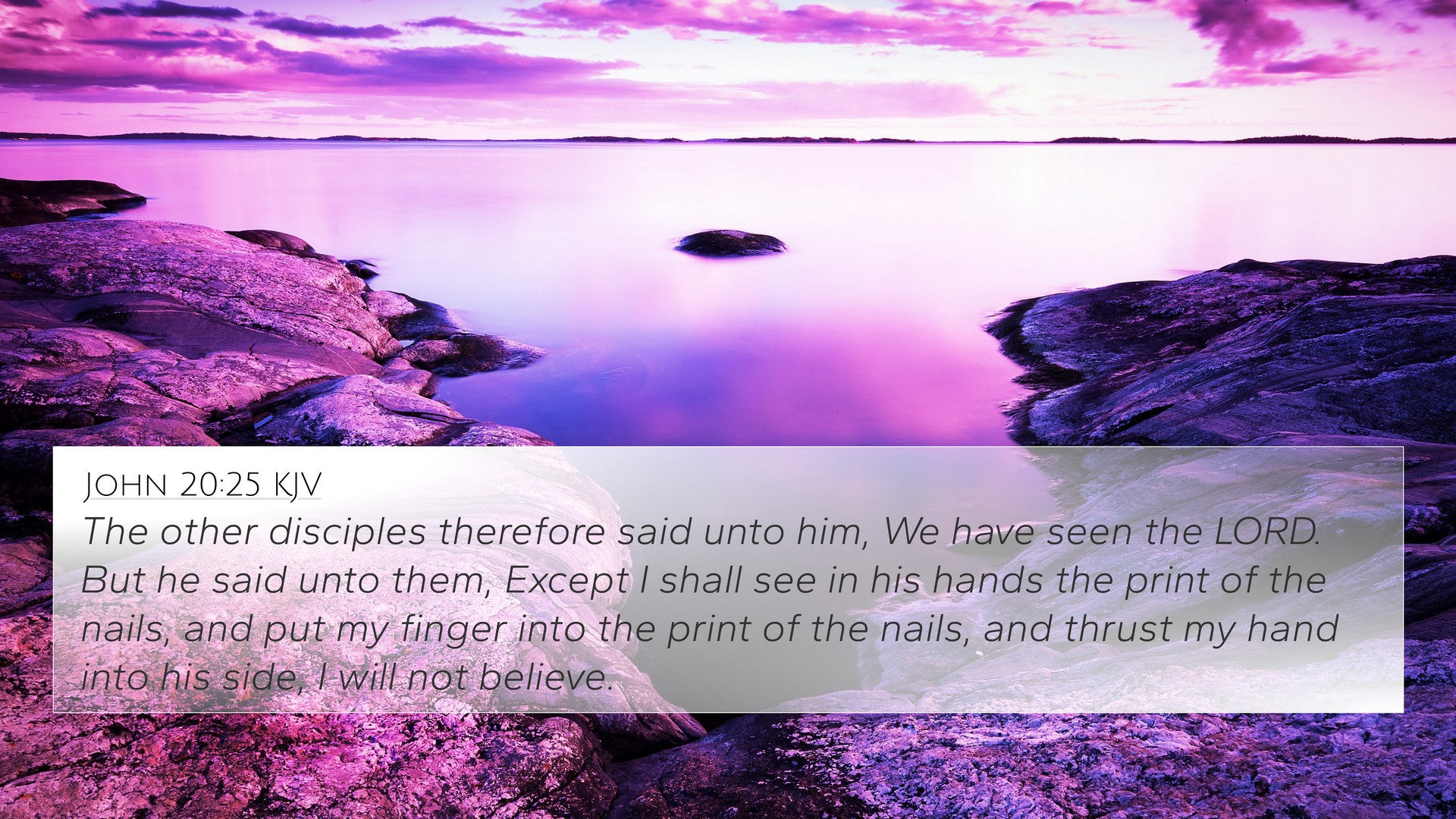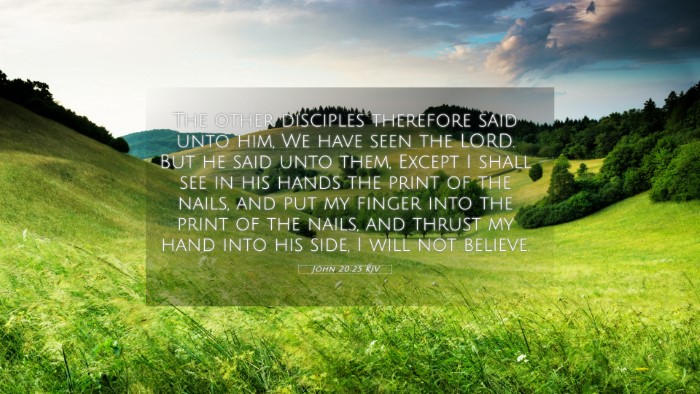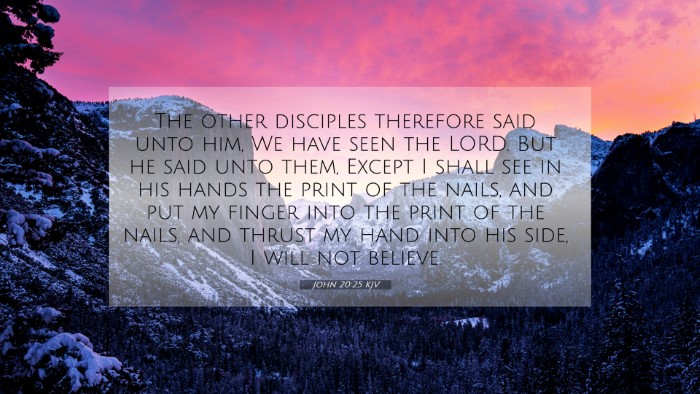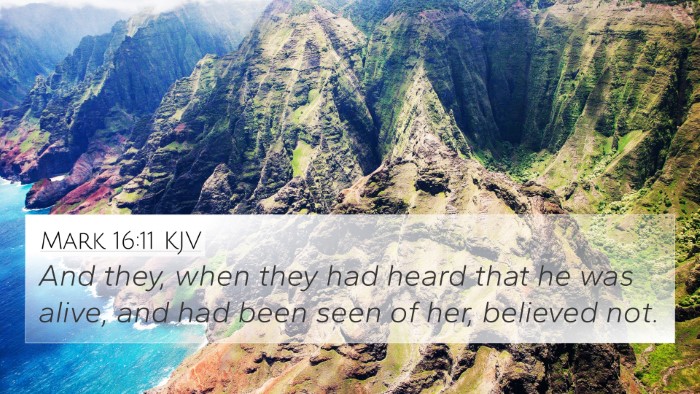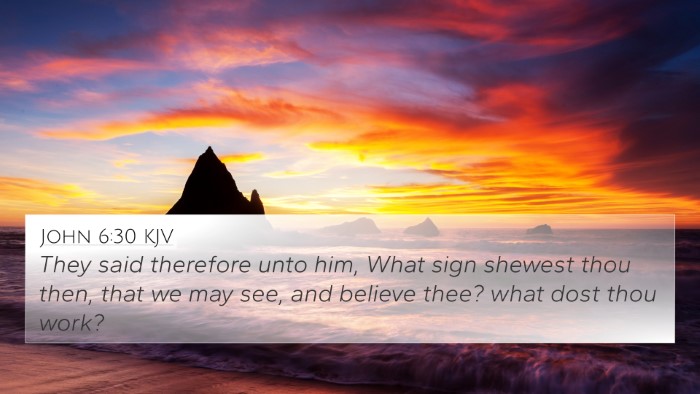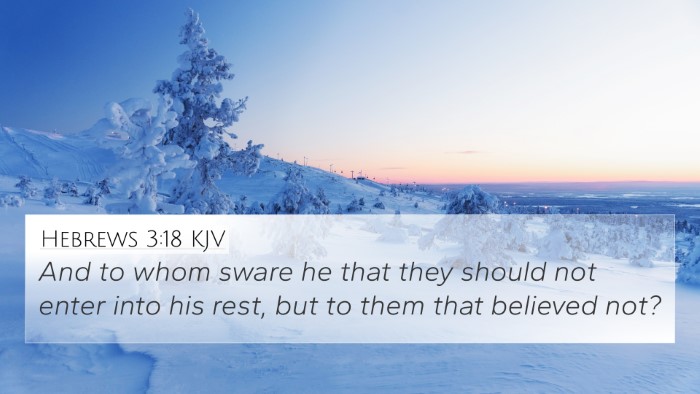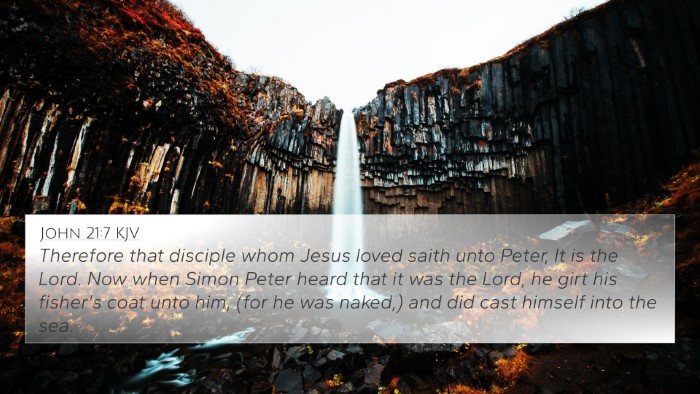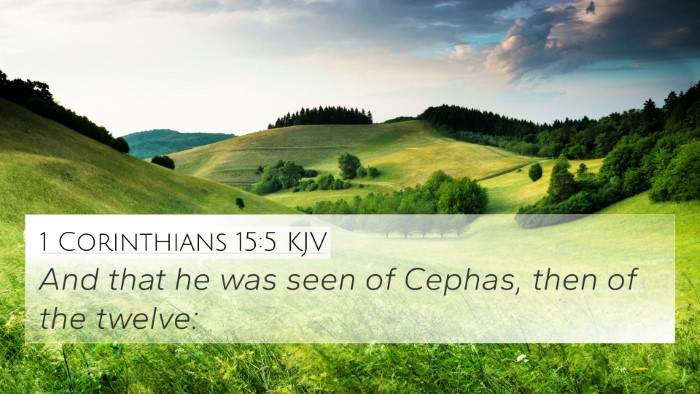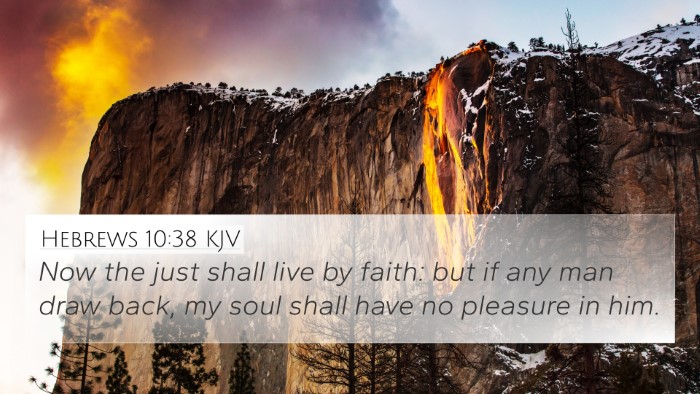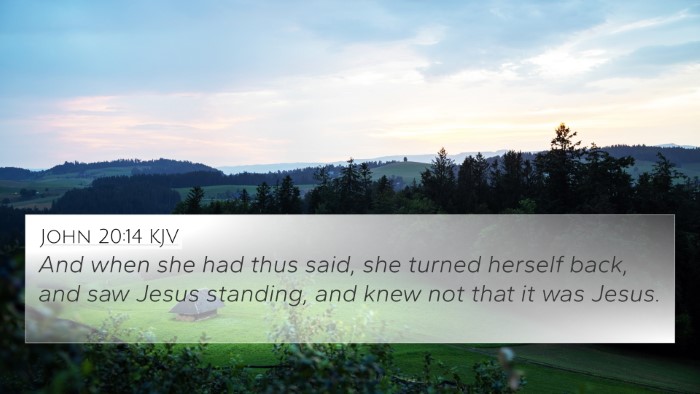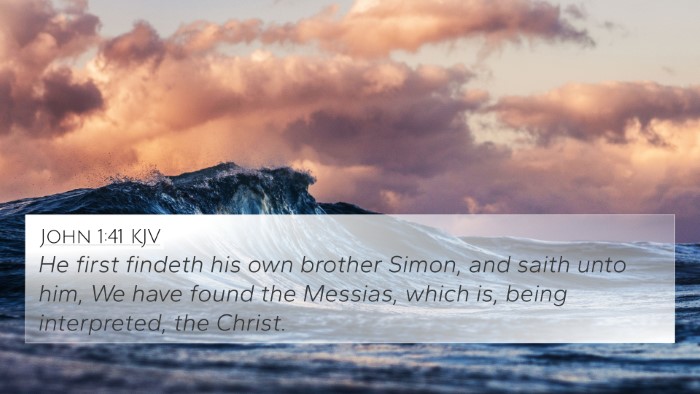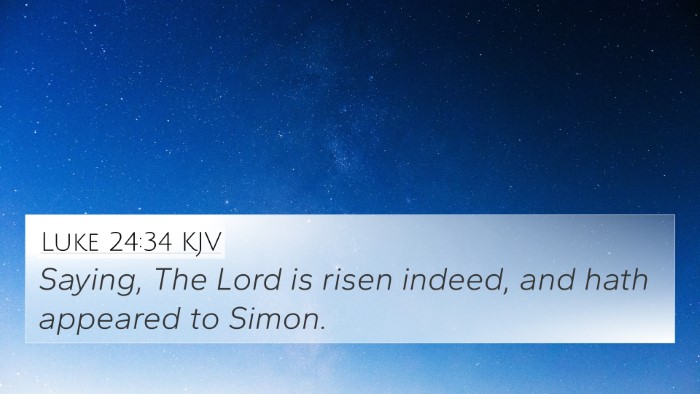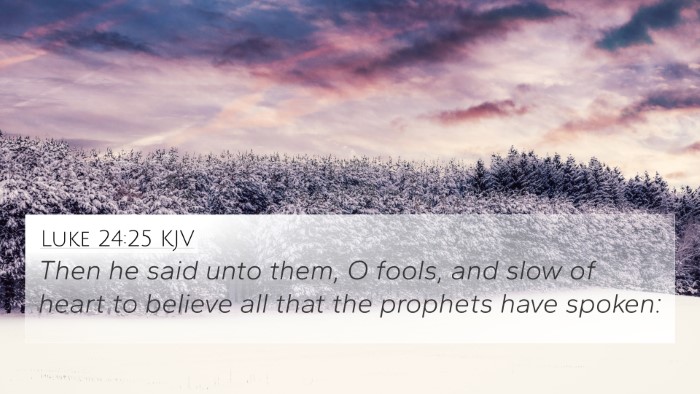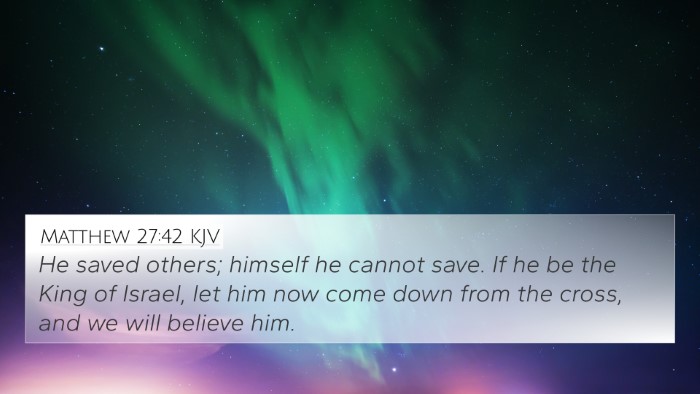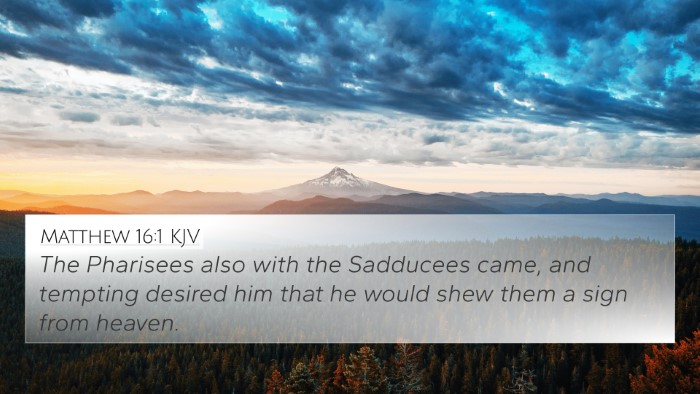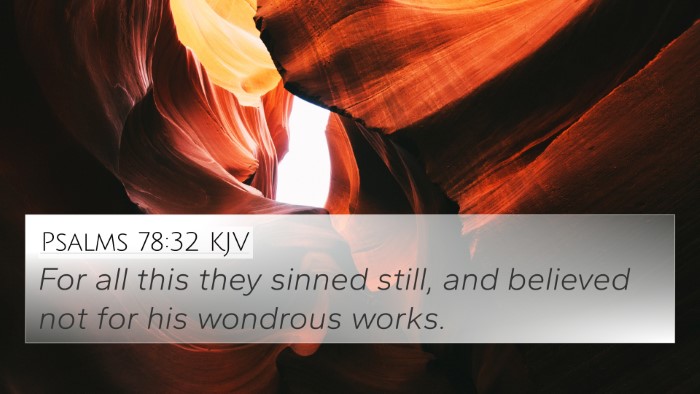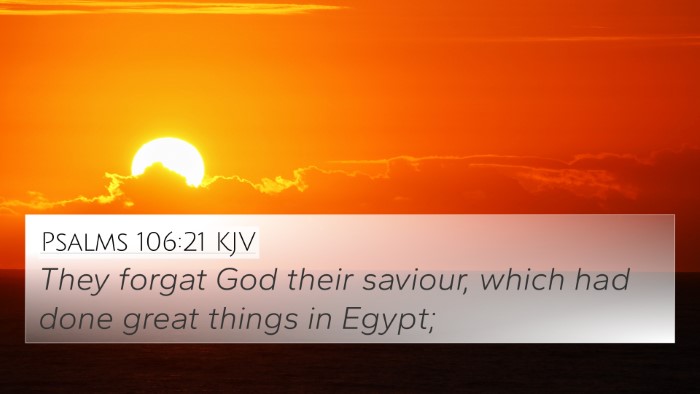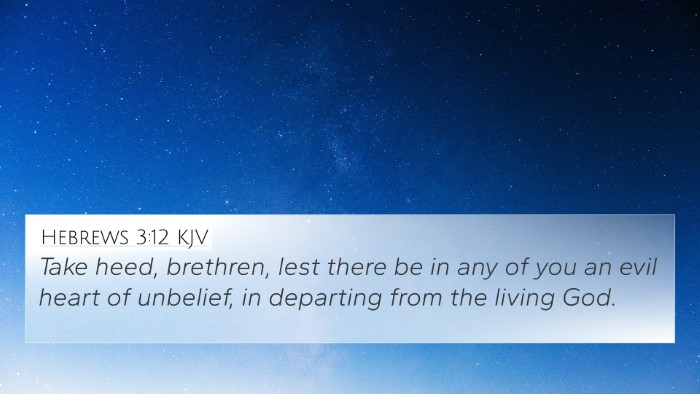Understanding John 20:25
In John 20:25, we encounter a profound moment in the aftermath of Christ's resurrection, where one of His disciples, Thomas, expresses his doubt about the resurrection until he can see and touch the evidence of Jesus' wounds. This verse—"The other disciples therefore said unto him, We have seen the Lord. But he said unto them, Except I shall see in his hands the print of the nails, and put my finger into the print of the nails, and thrust my hand into his side, I will not believe"—holds significant theological implications and provides numerous connections to other scriptural texts.
Summary of Meaning
This moment highlights the struggle between faith and doubt. Thomas's demand for tangible proof brings to light the human tendency to require evidence before belief. This situation also creates a dialogue on the nature of faith and the divine, reshaping how believers understand and interact with Christ’s resurrection.
Key Insights from Public Domain Commentaries
-
Matthew Henry:
Henry emphasizes Thomas's earnestness and the implications of his skepticism. He reflects on the importance of faith that does not rely solely on physical evidence, promoting a belief based on spiritual conviction instead.
-
Albert Barnes:
Barnes provides insight into the nature of belief and disbelief, presenting Thomas's doubt as a cautionary example that reminds believers of the spirituality involved in faith. He also discusses the relational aspect of belief as it pertains to personal experience and testimony.
-
Adam Clarke:
Clarke analyzes Thomas's behavior, noting how it serves to bring forth a deeper understanding of faith. He suggests that Thomas's doubt ultimately leads to a greater revelation of Christ's identity as both Lord and God, culminating in the powerful declaration of faith found later in the chapter.
Related Bible Cross References
John 20:25 can be connected to several other biblical passages that explore themes of faith, skepticism, and the nature of belief:
- John 20:20: This verse highlights the moment when the other disciples see the risen Lord, setting the stage for Thomas's doubt.
- Romans 10:17: "So then faith comes by hearing, and hearing by the word of God." This addresses the essence of faith in relation to belief without sight.
- 2 Corinthians 5:7: "For we walk by faith, not by sight." This encourages believers to trust in spiritual realities beyond physical evidence.
- Hebrews 11:1: "Now faith is the substance of things hoped for, the evidence of things not seen." This defines faith as a conviction that does not depend on visible proof.
- Matthew 28:17: In this verse, even after the resurrection, some doubted, which parallels Thomas's experience and highlights the universal struggle with belief.
- John 11:16: Thomas, also known as the Twin, encourages his fellow disciples to follow Jesus to Judea despite the dangers, showing his character's complexity.
- John 14:1: "Let not your heart be troubled: ye believe in God, believe also in me." This verse directly addresses the need for faith in Jesus in troubling times.
Exploring Faith Through Doubt
The narrative of John 20:25 does more than recount a moment of doubt; it serves as a powerful illustration of how faith can emerge from uncertainty. The struggle Thomas faces opens up an inter-Biblical dialogue on belief. As believers examine these connections, they can gain a deeper understanding of their own faith journeys.
Thematic Connections
By exploring the themes present in John 20:25, readers can discover numerous important biblical truths:
- Faith vs. Doubt: The struggle of Thomas is a relatable portrayal of human doubt, yet it also accentuates the transformative nature of faith.
- The Power of Testimony: The disciples’ testimony about the risen Christ plays a crucial role, paralleling themes throughout the New Testament.
- Seeking Evidence of Belief: Thomas's desire for proof before belief resonates with many who seek tangible signs of the divine.
Cross-Referencing Biblical Texts
Engaging in cross-referencing when studying this verse can enhance comprehension and provide new insights. Believers can utilize various tools for Bible cross-referencing such as:
- Bible concordance
- Bible cross-reference guide
- Bible reference resources
Conclusion
John 20:25 invites readers to embrace the complexities of faith. By examining the nuances of doubt and belief through the lens of this verse and its connections to other scriptures, individuals can find encouragement in their spiritual journeys. The passage reminds us that through our struggles with faith, we can discover deeper truths about Christ and our relationship with Him, urging a continual pursuit of understanding and belief even amidst uncertainty.
